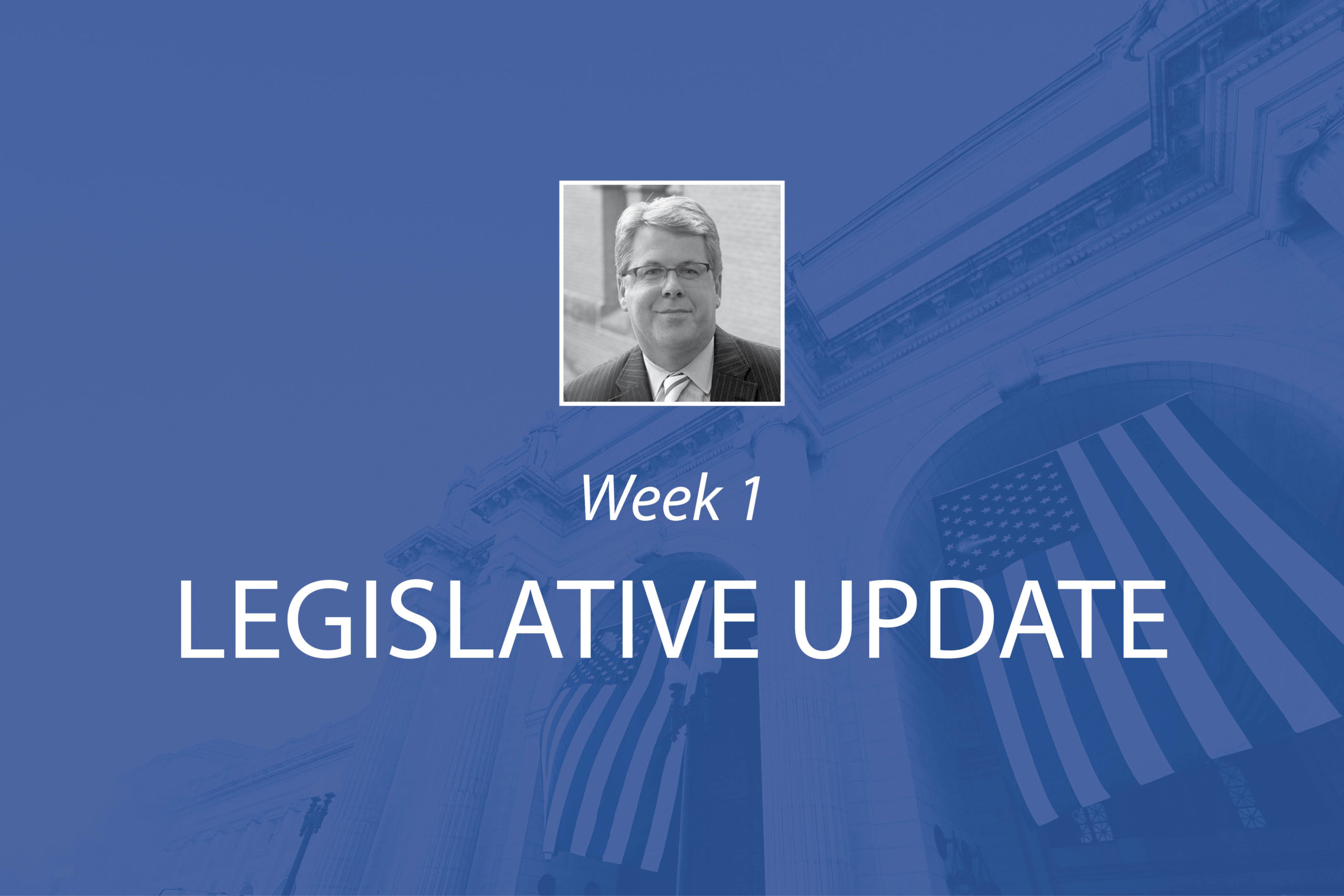In mid-August, the U.S. Senate passed a comprehensive infrastructure package titled the Infrastructure Investment and Jobs Act. The bipartisan measure includes over a half trillion dollars in spending on roads, ports, bridges, and rail, among other priorities. Included within the 2,700 page bill are number items of interest to ABMA members—
- Language creating a new federal system for subsidizing sawmills and other wood processing facilities, along with $400 million in new financial assistance. The provision specifies that “close proximity” to a sawmill would become a factor for agencies to consider when funding federal land restoration. One of the ongoing challenges to making thinning projects economical is access to processing facilities. Existing wood processing infrastructure is not in close proximity to many federal forests that desperately need active management. Other forestry related provisions in the bill are;
- $500 million for “ecologically appropriate thinning” on federal forestlands;
- $300 million for “ecological restoration projects” covering 10,000 acres of forestland;
- $200 million to support implementation of Good Neighbor Authority—an existing program that empowers states to help manage federal forestlands within their boundaries;
- A favorable provision grandfathering existing gross vehicle weight limits on state roads converting to interstate highways. Currently in North Carolina, several state roads are slated to become federal interstates in the near future. Right now, the maximum gross vehicle weight limit on North Carolina state roads is 90,000 pounds for 5 axle trucks carrying logs and forest products. Once those roads convert to interstates, the weight limit would decrease to 80,000 pounds unless the 90,000 pound standard is grandfathered. The Senate-passed infrastructure bill addresses this issue;
- Authorization for a pilot program allowing young drivers (between 18-21 years old) to operate trucks interstate after completing rigorous operational and safety training. Currently, younger drivers may drive all day every day within a state’s borders but may not cross state lines. For the last few years, the provision, known as the DRIVE Safe Act, has been a priority of truck-dependent industries as a way of attracting younger drivers to the profession. Related language was also included promoting women in the trucking workforce; and
- Language establishing a vehicle miles travelled (VMT) fee pilot program. Specifically, the legislation authorizes $125 million for grants that would enable creation of pilot VMT programs to collect data on whether a VMT is a viable option for replacing the gas tax to fund highway programs. The VMT would apply to both private and commercial vehicles.
Overall, the business community supports the measure as it does not roll back any tax benefits accrued from the Tax Cuts and Jobs Act. Funding for this proposal is derived in part from reprogramming unspent COVID relief funds. The National Association of Manufacturers and many other groups released statements following Senate passage strongly supporting the measure and several industry groups worked aggressively for its passage through the Senate. Prospects for ultimate enactment of this legislation are unclear as action in the House of Representatives awaits. Moreover, this measure will move in tandem with a reconciliation package that will be the vehicle for President Biden’s “social infrastructure” investment initiatives outlined in his American Families Plan. Before leaving town for the remainder of August, the Senate voted along party lines to advance a budget resolution containing reconciliation instructions that empowers committees in the Senate to begin fashioning a $3.5 trillion spending and tax package. The House followed suit shortly thereafter and approved the Senate-passed budget resolution and begin its process. As part of a deal with House moderates to secure their support, the House budget resolution includes a commitment that the full House will take up the bipartisan Senate infrastructure package by September 27.
Next Steps:
Work in earnest on this second, larger measure will begin in early September when committees in both chambers will be assembling and marking up their portions of the overall package. Key committees are the Senate Finance and House Ways & Means Committees as these two panels are in charge of paying for the package in the form of revenue raisers. An increase in the corporate tax rate is on the table as is eliminating the “step up in basis” for calculating capital gains when assets are passed on to heirs after death. Also on the table is limiting the 20 percent deduction enacted under the Tax Cuts and Jobs Act for S-Corporations and other pass through entities. Other key committees holding the pen on issues critical to our sector include the House and Senate Education and Labor Committees. In July, over 100 House members sent a letter to leadership advocating for significant spending in the area of workforce development. Specifically, the letter calls for at least $100 billion in new spending for workforce development programs, including:
- Adult workforce training and dislocated worker programs;
- Career and technical education and registered apprenticeships;
- Youth career pipeline programs and re-entry employment opportunities; and
- The full spectrum of training and career pathway supportive services, including income support, counseling and case management.
It also calls for new spending specifically for building more effective partnerships between training providers and employers, including subsidizing on-the-job training and co-creating curricula with employers in in-demand industries, sectors, and occupations.
The stated deadline for committees to report out their pieces of the package is September 15, although that deadline is non-binding and will almost certainly slip. The general consensus is that a number of proposals under discussion for inclusion in this $3.5 trillion package lack sufficient support for passing in either the evenly divided Senate or the House, where Democrats can afford only 3 defections in order for this package to pass. House and Senate Republicans are expected to be unified in their opposition. Moderate Senators Kristen Sinema (D-AZ) and Joe Manchin (D-WV) have already signaled that they cannot support the $3.5 trillion package as currently outlined. Likewise, leaders of the 19 member Blue Dog Coalition in the House—a group of moderate to conservative Democrats—has signaled their Coalition’s concerns with the current outline. To obtain the necessary number of votes, the package will likely have multiple iterations, potential failed votes, and could result in a smaller, more targeted package.
As a backdrop to all of this, Congress faces a number of key deadlines for action on “must pass” bills in September and October. Among them are:
- Enhanced Unemployment Benefits (September 6)
- Highway Bill Authorization Expires (September 30)
- Government Funding (October 1)
- Debt Ceiling (sometime after October 1)
The ABMA is close to the players and the process and will be engaged in the coming weeks and months in communicating our concerns and priorities to Members of Congress, legislative leadership, and the Administration.
Mass Timber in NDAA
On September 1, the House Armed Services Committee is scheduled to take up the Fiscal Year 2022 National Defense Authorization Act or NDAA. An amendment sponsored by Rep. Jared Golden (D-ME) that was included during subcommittee consideration of the bill would establish a pilot program for mass timber—a generic term that encompasses cross laminated and glue laminated timber products, among others— to be used in military construction projects. As soon as the subcommittee approved the amendment, the concrete industry was out with a letter criticizing the policy as “picking winners and losers” and extolling the carbon benefits of concrete construction. ABMA is working with our wood products association allies here in town to support inclusion of the mass timber pilot in any final bill that is reported from committee and moves to the House floor. The messaging to full committee members is mass timber is less expensive than competing materials, speeds construction time by 15-20 percent, and is proven to sequester carbon—unlike steel or concrete.




